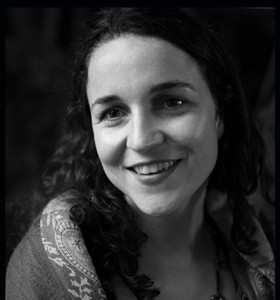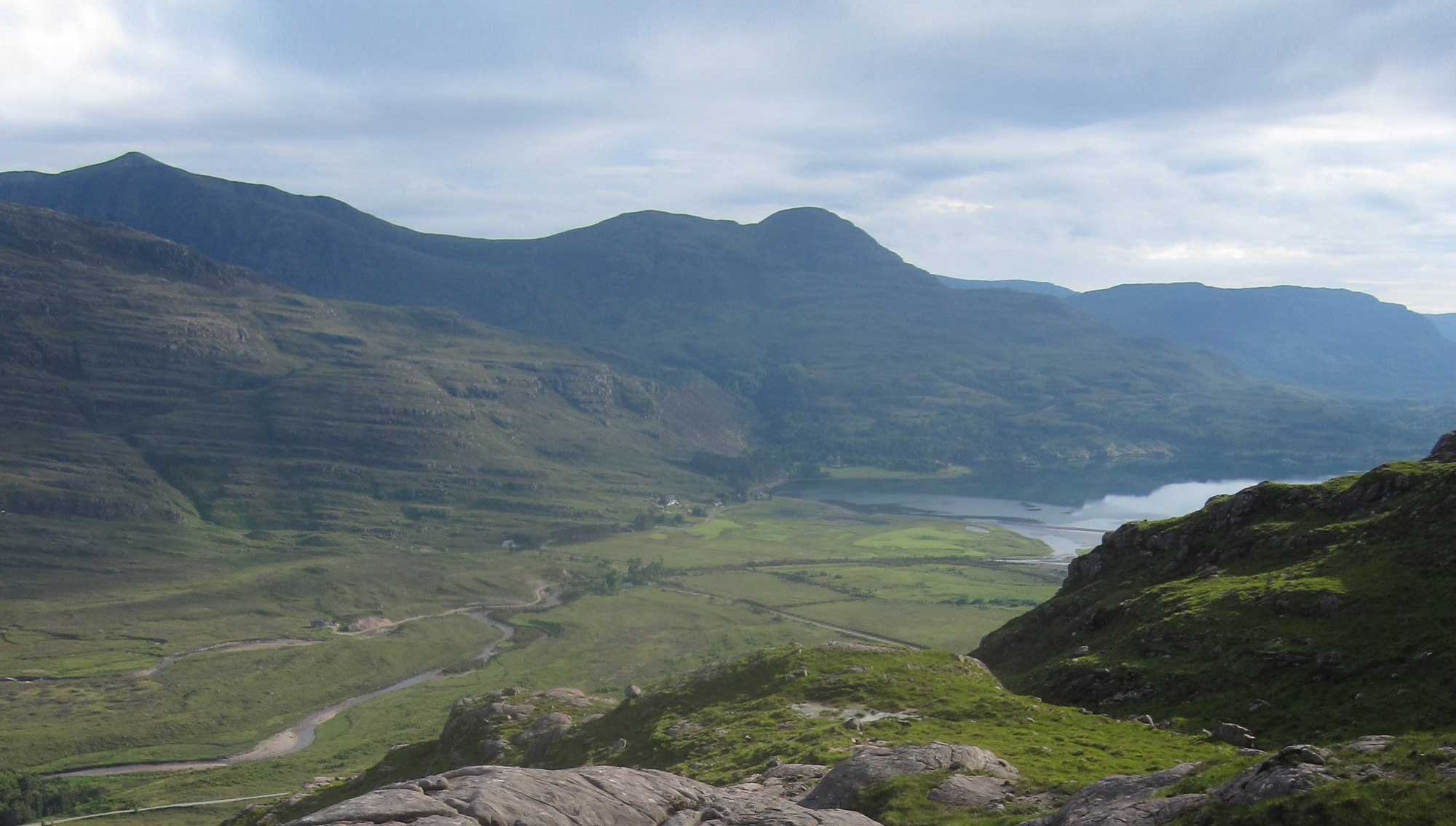
The dining table at Newton Walled Garden
A white linen table cloth can be as terrifying as the blank page. Both are beautiful and full of potential, but where the hell do you start to tell the story?
The photograph above shows the dinner table at Newton Walled Garden laid for an informal lunch. It looks perfect, the sun is shining outside and the flowers are fresh from the garden. You can almost smell the rabbit ragu that is bubbling away in the kitchen next door.
But look at the next picture, which tells you a little bit more about where the rabbit ragu came from…

Ready to begin a workshop in food writing and rabbit skinning at Newton Walled Garden
The table is about to be transformed into a very different scene: a bloody, messy, dangerous butchery as the rabbits are prepared for eating.
I am standing at the head of the table ready to instruct six people about how to skin and joint a rabbit. I am looking a little nervous! These intrepid lunch guests had signed up to a workshop on food writing. The idea was to discuss how best to describe the food we eat, whilst learning a little more about the reality of where it comes from.
Essentially, how do we get from these dead rabbits to a plate of delicious food? How do we tell the story of this magical transformation?
We started the workshop talking about truth. All good writing must be truthful and in food writing we are simply trying to describe truthfully what is happening. We agreed the best way to do this is often smell, as it so powerfully takes us back to a certain time and place.
There is also sight, describing the look of the food; touch, describing the texture and of course the most important, how does it taste? Sound may seem like a strange one for food but often the background and preparation can create some interesting noises. In the case of the rabbits, the slam of the meat cleaver, the cracking of bones and even the gurgle of removing the giblets.
Lastly, I talked about a ‘sixth sense’, the feelings that are evoked when you come into contact with food. This tells the reader a lot about your state of mind and helps them to truly understand what is going on.
A hint of the dark humour that saw us laughing even as we ‘took the jacket off’ the rabbits tells you a little bit about the nervous energy in the room. For many it was the first time they had butchered an animal in the fur. Rabbits are of course beautiful and there is an element of sadness that perhaps we like to cover up with jokes?
The quiet moments when we admired the the soft fur of the rabbits or the beauty of the heart and lungs tells you about the respect for these animals.
It is often said the greatest respect to the animal is in the eating. For me it is in telling the story. Most of the time this is through the meal but food writing can extend that story to the page. We can inform the reader exactly where the wild rabbits have come from. In this case from a local game dealer controlling rabbits on Forestry Commission land to allow trees to grow.
After preparing the rabbits we repaired to the garden to discuss how we could each individually relate our own experience. How could we describe those smells and sounds without shocking readers?
Away from the visceral experience of skinning the rabbits the conversation turned more philosophical. Despite the initial shock of seeing the dead rabbits, all of the participants took up the knife and relished learning a new skill. Is it okay to enjoy the delicate art of slicing around a shoulder blade or popping out a hip bone?
Personal stories came to light of grandparents keeping rabbits and whole villages slaughtering pigs that added background to our stories. If this has been done for generations, how did we get to this place where so few of us know intimately where meat is really from?
Sometimes we turn away from these realities because they frighten us and we’d rather not know. But I think the knowing is where the joy is. Food writing and food in general is messy – like life.

Lunch at a food writing workshop at Newton Walled Garden
When we returned to the workshop the table was transformed from a butcher’s block scattered with knives and blood-smeared chopping boards to a pretty dining table set with linen and bone china. Even the gamey fug of rabbit guts had been replaced by the rather more pleasant smell of home-cooked rabbit.
Naturally the conversation turned to how did this transformation take place, from a live rabbit to a carcass and finally, via our work, to a plate of food? Social anthropologists have made much of this habit of humans to take nature and force it into useful purpose, from ‘the raw to the cooked’, what we often call ‘culture’.
I don’t want to force the metaphor but I also think there is something similar in writing, in how we make sense of past experiences by telling stories and in particular in writing them down.
My first book The Ethical Carnivore describes my year only eating animals I killed myself. It was a difficult experience and often distressing. The writing was not only important in explaining to other people how meat is raised and killed, but also in coming to terms with my own emotions.
Around the table in the workshop, able to relax, we talked about how we had all felt during the skinning and butchering of the rabbits. By ‘talking it out’ and offering different perspectives we helped make sense of it and tell the story of the transformation of the rabbits into our delicious lunch.
There are so many ways to tell the story of your food, so many opinions, so much to describe and investigate. I hope all the participants went away knowing their opinion is valid and ready to tell stories via the blank page or the dining table.
The workshop is one of many at Newton Garden. If you would like to participate look up Food Beyond the Plate on Facebook.



This is a great post. I’m halfway through ‘reading’ the Ethical Carnivore via audiobook, having visited a slaughterhouse myself recently. I’d love to follow up the links on your post, specifically to enquire re any further food writing workshops you are doing – but right now, the links aren’t working. Can you give me this further info please?
Sorry to take so long to reply to this Helen! I am not doing any workshops soon except for a talk at Queen Margaret University but if you follow loubgray on Instagram and Twitter and the Ethical Carnivore on Facebook I will try and post there. Hope you enjoyed the audio book!!